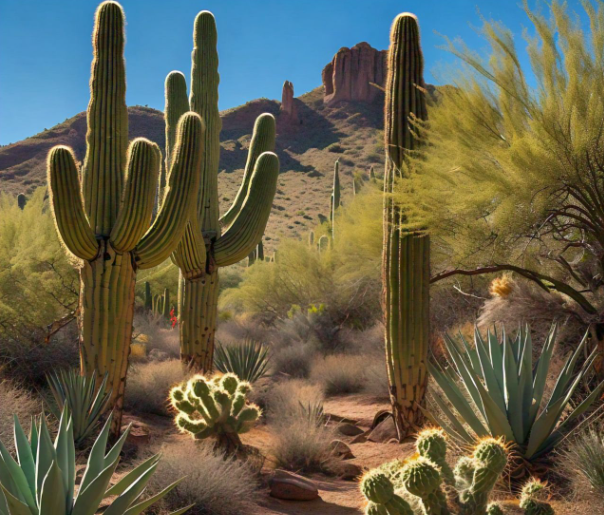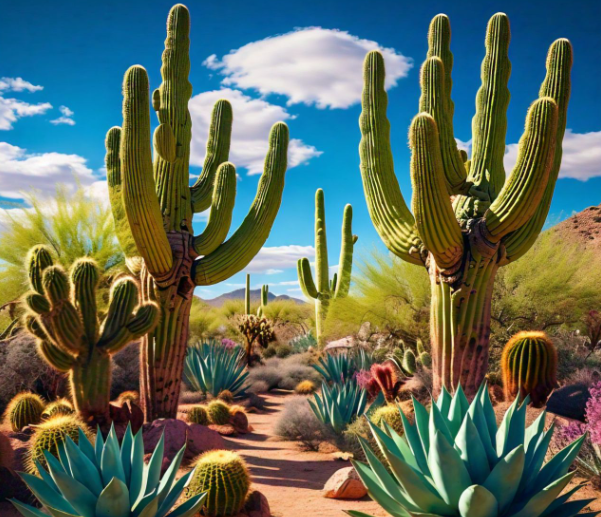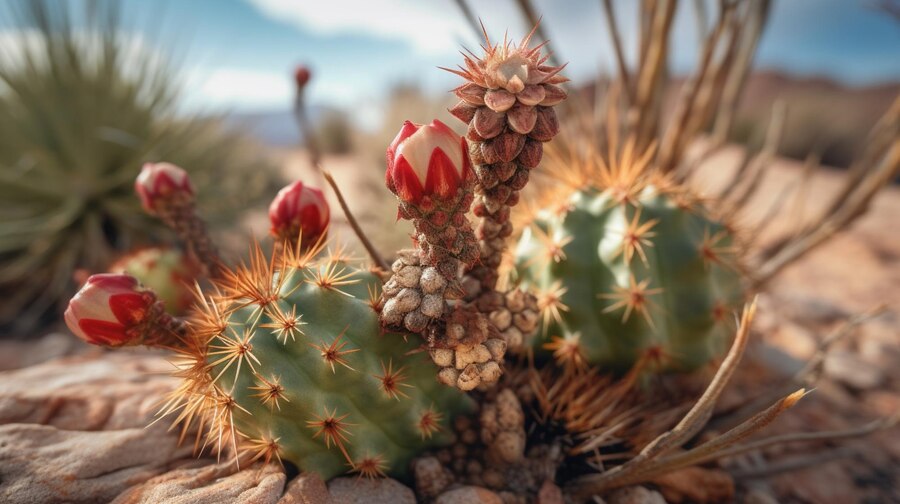Desert flora NYT reveals the unique and fascinating world of plants that survive in some of the harshest conditions on Earth. These plants have amazing abilities that allow them to thrive with little water and extreme temperatures. In this blog post, we’ll learn more about the desert flora and how they have adapted to their dry environments.
Desert plants, like cacti and agave, have special features to help them stay alive. They can store water in their thick leaves or stems, and some have spines instead of leaves to prevent water loss. This adaptation helps them survive in the desert’s dry and hot conditions, making them true survivors.
What is Desert Flora NYT and Why is it Important?
Desert flora NYT includes the unique plants that grow in dry, hot desert regions. These plants have special features that help them survive without much water. Desert flora can range from small flowers to giant cacti. They all assume a significant part in the desert biological system by giving food and safe house to creatures.
These plants have adjusted to the unforgiving desert environment. For example, some plants store water in their leaves or stems, while others have protective layers to keep moisture inside. By studying desert flora, scientists learn how plants can survive in tough conditions. This knowledge helps us understand how to protect our planet and conserve water.
The Most Common Types of Desert Flora You Should Know About

There are many types of desert flora, each with unique characteristics. Some of the most common plants found in deserts are cacti, agave, and yucca. These plants are known for their ability to survive without much water.
- Cacti: Cacti are the most famous desert plants.They have thick stems that store water.
- Agave: Agave is another plant that can survive in dry conditions. It has spiky leaves that help it conserve water.
- Yucca: Yucca plants have long, pointed leaves and can survive extreme heat.
Each of these plants has a different way of surviving in the desert. Some use thick skin to keep water in, while others have special root systems that can find water deep underground.
How Does Desert Flora NYT Survive in Harsh Conditions?
Desert flora NYT survives in harsh conditions by making smart choices. They have special features that help them deal with extreme heat and dry weather. For example, some desert plants have thick, waxy skin. This helps them store water and prevent it from evaporating in the hot sun.
- Water Storage: Many desert plants store water in their stems or leaves to use later.
- Spines Instead of Leaves: Some desert plants have spines instead of leaves. This reduces water loss by preventing evaporation.
These survival strategies allow desert plants to thrive in areas where most other plants would not survive. They make the desert a unique and important place for plant life.
Cacti and Agave: The Stars of Desert Flora NYT

Cacti and agave are two of the most well-known desert plants. These plants have amazing features that help them survive in extreme heat. Desert plants have thick, meaty stems that store water.This allows them to survive even when it doesn’t rain for months.
Agave plants also have unique characteristics. Their long, pointed leaves store water and protect the plant from the sun’s heat. Many species of agave are used for making drinks, like tequila. These two plants are crucial parts of desert flora because they provide food, water, and shelter to desert animals.
Desert Flora NYT: How Plants Adapt to Extreme Heat
Desert flora NYT adapts to extreme heat through clever strategies. These plants often have deep roots that can find water deep below the surface. Other desert plants use a process called “photosynthesis” at night instead of during the day. This helps them avoid losing too much water under the hot sun.
- Deep Roots: Many desert plants have roots that can reach water far beneath the ground.
- Night Photosynthesis: Some desert plants do their photosynthesis at night when it’s cooler.
By adjusting to the temperature, these plants can survive even the hottest desert days. Their unique survival tricks make them some of the toughest plants in the world.
The One of a kind Stunner of Desert Verdure: A More critical Look
Desert flora NYT is not only important for survival but also beautiful. The plants in the desert come in many shapes and colors. Some plants, like cacti, have bright flowers that bloom for a short time. Others, like agave, have tall stalks with yellow flowers that stand out in the desert landscape.
These plants also attract animals, such as birds and insects, who rely on them for food. The beauty of desert flora is truly special, showing how life can thrive in even the toughest places.
How Desert Flora NYT Helps the Ecosystem Thrive
Desert flora NYT plays a key role in the desert ecosystem. These plants give food and sanctuary to numerous creatures. Some desert animals, like rodents and insects, eat the seeds, flowers, or leaves of desert plants. Others, such as birds, use the plants for nesting.
- Food for Animals: Desert plants are a food source for animals.
- Shelter for Wildlife: Some plants also act as homes for desert creatures.
Without desert flora, the desert ecosystem would not be able to function. These plants are essential to the survival of the entire ecosystem.
Exploring the Different Types of Cacti in Desert Flora NYT
Desert flora NYT is full of fascinating cacti species. Cacti come in many shapes and sizes. Some are little and round, while others are tall and spiky. The most common types of cacti are the saguaro, barrel cactus, and prickly pear.
- Saguaro: This is perhaps of the biggest prickly plant on the planet and can develop north of 40 feet tall.
- Barrel Cactus: Known for its round shape, this cactus stores a lot of water.
- Prickly Pear: A smaller cactus, known for its flat, paddle-like leaves.
These cacti have adapted to desert life in different ways. Some store water in their thick stems, while others grow deep roots to find moisture underground.
Conclusion
Desert flora NYT shows us how plants can be amazing survivors. These plants have special tricks that help them stay alive in places that are very hot and dry. By storing water, growing deep roots, and using spines to keep cool, desert plants can live through tough conditions. Without them, many animals wouldn’t have food or shelter in the desert.
Learning about desert flora helps us appreciate nature more. Despite the fact that deserts appear to be unfilled, they are loaded with life. The plants in deserts teach us how important it is to protect the environment and keep the planet healthy. So, next time you think of a desert, remember how incredible desert flora really is!




